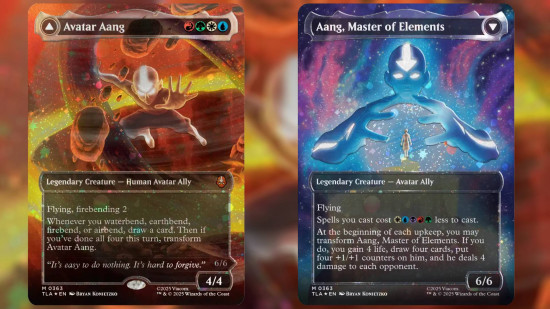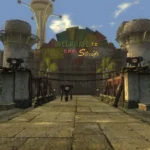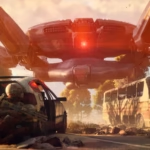The highly anticipated collaboration between two beloved franchises is officially underway! Magic: The Gathering (MTG), the world-renowned collectible card game, is expanding its “Universes Beyond” series with an upcoming set based on Avatar: The Last Airbender.
This crossover is generating immense excitement among fans of both the iconic animated series and the strategic card game. The first glimpse into this exciting new set has been unveiled, showcasing a powerful and deeply thematic card: Avatar Aang.
Aang, the beloved protagonist of the original Avatar: The Last Airbender television series, has received a full-fledged Magic: The Gathering adaptation. His card is a meticulously designed double-faced card, a rare and powerful card type in MTG. This card features not only stunning, evocative artwork that captures the essence of the character but also emotionally charged flavor text, immersing players deeper into the lore. For those less familiar, the MTG Avatar:
The Last Airbender set draws inspiration from a rich tapestry of TV shows, graphic novels, and books. This vibrant fantasy world is deeply rooted in pan-Asian mythology, creating a unique and compelling backdrop. The original series follows Aang, a destined hero chosen to master the powers of all four elements – air, water, earth, and fire – to restore balance and save his world from a tyrannical dictator. This fundamental aspect of the Avatar universe is brilliantly reflected in Aang’s mechanics within Magic: The Gathering.
Avatar Aang: A Commander of Four Elements
Aang’s card design perfectly embodies his role as the master of all four elements, making him a unique and formidable commander in Magic: The Gathering.
The Power of Four Colors
Aang’s central identity as a master of all four elements is directly translated into his status as a four-color commander in Magic: The Gathering. In MTG, a commander’s “color identity” dictates which colors of mana symbols can appear on cards within a player’s 99-card deck. Most commanders are one, two, or three colors. Four-color commanders are much rarer, making Aang immediately stand out as a unique and powerful option for deck-building.
This design choice aligns perfectly with Aang’s lore, as he wields air, water, earth, and firebending, representing White, Blue, Green, and Red mana colors respectively (with Black typically representing a fifth, opposing element in MTG’s color pie).
While the specific mechanics for “firebending,” “waterbending,” “earthbending,” and “airbending” have not yet been fully revealed, it is “safe to say that these will be tailored around four of MTG’s five iconic colors.” This strongly implies that performing actions related to casting spells of those particular colors will likely trigger specific abilities on Aang.
For example, playing a Blue spell might trigger a “waterbending” effect, or a Red spell a “firebending” effect. Regardless of the precise details, the card design strongly suggests that multi-color strategies will be significantly rewarded within this upcoming set. This focus on multiple colors and synergistic elemental abilities could potentially earn Aang a coveted spot on lists of the best MTG commanders, known for their strength and versatility in the popular multiplayer format.
Transformation and Powerful Rewards
The design of Avatar Aang’s card incorporates a dynamic double-faced card (DFC) mechanic, reflecting his iconic transformation into the Avatar State. On his primary side, Aang likely focuses on building up elemental “bending” actions. Once a sufficient number of bending conditions are met on a given turn – presumably by casting spells or activating abilities related to the different elements – Aang will transform. This transformation represents his entry into the formidable Avatar State, a powerful mode that grants him immense abilities.
Upon transforming, Aang immediately offers a “massive discount on multi-color spells.” This ability significantly reduces the mana cost of spells that include two or more different colors of mana, enabling players to cast more powerful, intricate spells more easily and frequently. This encourages players to build decks that fully leverage Aang’s four-color identity. Furthermore, Aang’s transformed state provides incredible value during each subsequent turn.
“Every upkeep, you can bring Aang out of his transformed state, too,” but not before receiving a cascade of benefits. This effect grants players “four +1/+1 counters” (making creatures larger and stronger), “four life” (increasing player’s health total), “four cards” (providing significant card advantage), and “four damage to each opponent.” The phrase “that ‘each’ will do a lot of work in multiplayer commander games” is particularly significant.
In the Commander format, which typically involves three or more players, dealing damage to “each opponent” can quickly deplete multiple opponents’ life totals simultaneously, making Aang a potent threat in group play. This cycle of building up bending, transforming for a discounted turn, and then resetting for a powerful upkeep trigger makes Aang a highly synergistic and impactful commander.
The Magic of Universes Beyond: Avatar’s World in MTG
The Avatar: The Last Airbender set is part of Magic: The Gathering’s “Universes Beyond” initiative, bringing beloved franchises into the MTG multiverse.
A Deep Dive into Avatar Lore
The integration of Avatar: The Last Airbender into Magic: The Gathering’s “Universes Beyond” collection is a testament to the enduring popularity and rich lore of the animated series. “Universes Beyond” allows Wizards of the Coast, the creators of MTG, to collaborate with other iconic franchises, translating their characters, stories, and worlds into Magic cards.
This particular set is based on the beloved collection of TV shows, graphic novels, and books that together form the Avatar: The Last Airbender universe. This fantasy world is vividly brought to life, drawing heavy inspiration from pan-Asian mythology and cultures, which is reflected in its unique bending arts, architecture, philosophy, and societal structures.
The core narrative of the first series follows Aang, the last airbender and the Avatar, a destined hero burdened with the responsibility of mastering all four elemental bending arts—air, water, earth, and fire. His mission is to save the world from the oppressive rule of the tyrannical Fire Lord Ozai and end the century-long war waged by the Fire Nation.
Translating this intricate world into Magic: The Gathering cards involves careful consideration of the characters’ personalities, their bending styles, iconic locations, and key events. For instance, the concept of “bending” itself is being adapted into new gameplay mechanics, likely involving synergy with specific colors of mana and perhaps even representing the different philosophies and martial arts associated with each element. This promises a deeply thematic experience for fans, allowing them to relive the epic journey of Aang and his companions through the strategic gameplay of Magic.
What to Expect from the Full Set
The preview of Avatar Aang is just the first taste of what promises to be a comprehensive and exciting set. More news surrounding the Avatar: The Last Airbender Magic: The Gathering set is officially scheduled for August 12. This date will be a major reveal event, providing in-depth details about the mechanics and products on offer. Players can anticipate learning precisely how the “bending” mechanics will function, how they interact with existing MTG keywords, and how they will shape gameplay within the new set. This reveal will also clarify the overall design philosophy and the intended playstyle for the set.
Beyond individual cards and mechanics, fans can “almost certainly see some Avatar Commander decks revealed, too.” Commander is Magic: The Gathering’s most popular multiplayer format, where players construct 100-card singleton decks around a legendary creature designated as their commander. It is highly probable that Wizards of the Coast will release preconstructed Commander decks tied to the Avatar universe, allowing players to jump right into the action with themed decks featuring fan-favorite characters and strategies.
These preconstructed decks, often referred to as “precons,” are designed to be ready-to-play right out of the box and provide an accessible entry point into the Commander format. If these Commander precons are well-designed and powerful, “perhaps they’ll join our list of the best MTG Commander precons,” becoming popular choices for both new and experienced players looking for a flavorful and competitive experience.
The full worldwide release for the Magic: The Gathering | Avatar: The Last Airbender set is expected on November 21, 2025, with prerelease events likely beginning the week prior, around November 14. This timeline gives fans plenty of time to prepare for the arrival of this highly anticipated crossover.
The Commander Format: A Perfect Fit for Aang
Aang’s four-color identity and powerful abilities make him an ideal candidate for the Commander format, Magic: The Gathering’s most popular casual format.
Understanding Commander Gameplay
The Commander format (also known as EDH) is Magic: The Gathering’s most popular and widely played casual format. It’s renowned for its multiplayer nature, emphasis on unique deck construction, and the ability to express personal playstyles. At its core, Commander involves a 100-card singleton deck, meaning with the exception of basic lands, each card in the deck must have a unique name. The central figure of the deck is a “legendary creature” chosen by the player to serve as their “commander.”
This commander resides in a special zone called the “command zone” and can be cast multiple times throughout the game, though its casting cost increases with each subsequent cast from that zone (known as the “commander tax”).
A crucial rule of the Commander format is “color identity.” Every card in a player’s 99-card deck must share a color identity with their chosen commander. For example, if a commander has Green, White, and Blue in its color identity, the deck can only contain cards that include only those colors or are colorless. Players start with 40 life in multiplayer games, significantly higher than the 20 life in standard formats, leading to longer, more epic games.
Another unique aspect is “commander damage”: if a single commander deals 21 or more combat damage to a player over the course of a game, that player loses, regardless of their life total. This adds an alternative win condition and encourages aggressive plays with commanders. The format thrives on big, splashy spells, intricate synergies, and dynamic board states, making it a highly interactive and engaging experience for groups of friends.
Why Aang Excels as a Commander
Aang’s design as a four-color commander positions him perfectly to excel in the Commander format. His ability to access a broad spectrum of colors – White, Blue, Green, and Red – allows for immense flexibility in deck construction. This opens up a vast card pool, enabling players to incorporate powerful cards and synergistic combinations from four distinct colors of Magic. This kind of diversity is highly sought after in Commander, as it allows for adaptable strategies, robust answers to opponents’ threats, and creative combo potential.
Furthermore, Aang’s core abilities, particularly his transformation and the subsequent upkeep benefits, are tailor-made for the multiplayer nature of Commander. The ability to gain four +1/+1 counters can quickly build up a formidable board presence, especially on multiple creatures if the counters can be distributed. Gaining four life per upkeep adds resilience, helping players weather aggressive assaults from multiple opponents. Drawing four cards provides unparalleled card advantage, keeping the player’s hand full of options and threats.
Most significantly, dealing “four damage to each opponent” can be incredibly impactful in a multiplayer game. If Aang is played in a four-player game, for example, he can deal a total of 12 damage across the table every turn, swiftly reducing opponents’ life totals and pressuring them into finding answers. This combination of mana access, powerful value generation, and multiplayer-focused damage makes Avatar Aang a formidable and exciting choice for Commander players looking to embody the Avatar’s raw power on the battlefield.
New Horizon for Magic and Avatar Fans
The unveiling of Avatar Aang as the first preview card for Magic: The Gathering’s Avatar: The Last Airbender set marks a thrilling moment for fans of both franchises. His unique identity as a powerful four-color commander, designed with thematic “bending” mechanics and a dynamic transformation, promises an engaging and versatile gameplay experience, particularly within the popular Commander format.
As the November 21, 2025, worldwide release date approaches, the anticipation continues to build. The scheduled August 12 reveal event is eagerly awaited, promising more insights into the set’s mechanics and the highly anticipated Commander decks. This “Universes Beyond” collaboration represents more than just nostalgia; it’s a carefully crafted integration that brings the rich lore and elemental mastery of Avatar to the strategic depths of Magic: The Gathering, offering a new horizon of play for fans around the globe.








